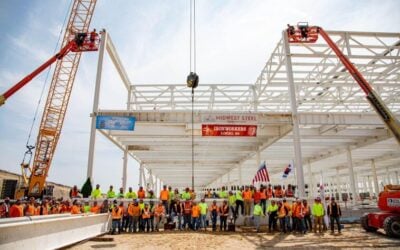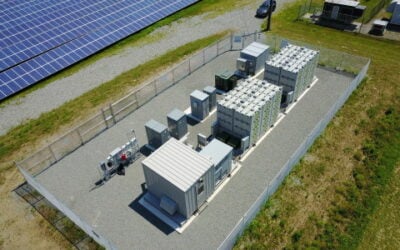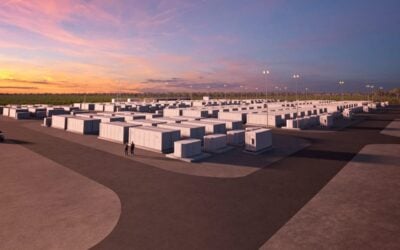Staff from Sandia National Laboratories met with government representatives in Singapore. Credit: Sandia
A US state-backed organisation is partnering with the government of Singapore to build and test up to three energy storage systems using a variety of technologies on the island state.
Sandia National Laboratories, which is managed by a subsidiary of Lockheed Martin Corporation and is a contractor for the U.S. Department of Energy’s National Nuclear Security Administration, signed an agreement with Singapore’s Energy Market Authority (EMA) to cooperate on R&D for various storage applications on the grid.
Sandia will build up to three energy storage pilots, the first in Singapore, at existing electrical substations using a range of lithium-ion, flywheels and flow battery technology. By testing grid applications such as frequency and voltage support and helping integration of renewables, EMA will also be able to develop standards and guidelines for grid integration and fire safety. Sandia will also assess the economic case for storage and advise EMA on policy and regulatory frameworks, by providing periodic reports on the pilot systems’ performance.
The four-year agreement also has the backing of the DOE Office of Electricity’s Stationary Energy Storage Program, which aims to develop advanced energy storage technologies to increase reliability, performance and competitiveness of electricity generation and transmission in both the grid and in standalone systems.
Try Premium for just $1
- Full premium access for the first month at only $1
- Converts to an annual rate after 30 days unless cancelled
- Cancel anytime during the trial period
Premium Benefits
- Expert industry analysis and interviews
- Digital access to PV Tech Power journal
- Exclusive event discounts
Or get the full Premium subscription right away
Or continue reading this article for free
Dan Borneo, Sandia team lead on the project, said: “We’ll get to see the operational data and the kinds of challenges that arise in Singapore’s type of environment, which is hot and humid, and highly urbanized. With this knowledge we can better support the nation’s effort to deploy solar while maintaining the reliability of its power system.”





